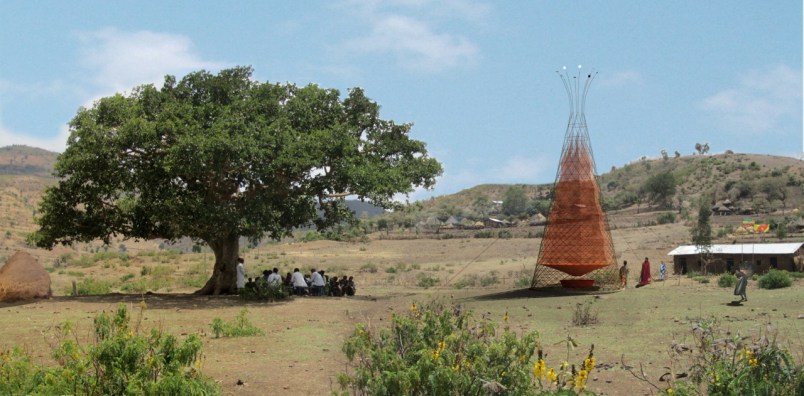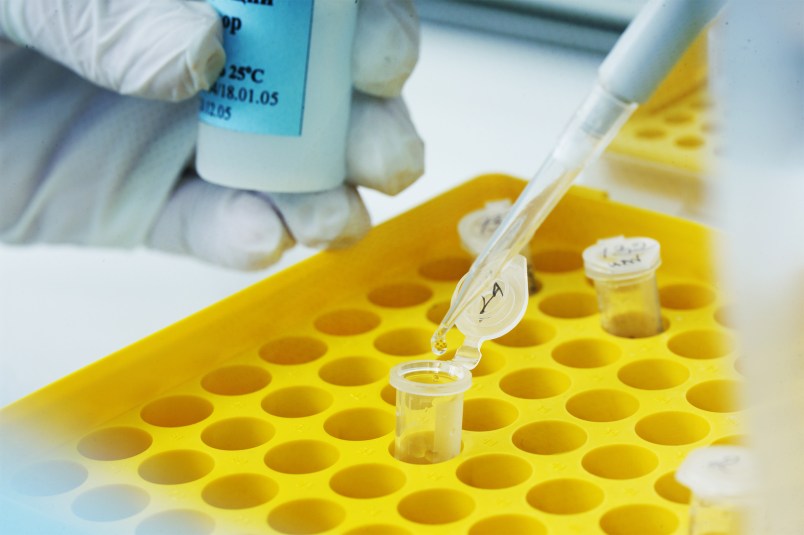Who says useful things can’t also be pretty?
Equal parts sculpture and cistern, the WarkaWater project, named for the warka tree of Ethiopia, a common meeting place for communities, is meant to provide people living in arid areas access to clean fresh water, plucked right out of thin air.
The water collection tower, conceived of by the Italian design firm Architecture and Vision, will also add to the skyline of the Ethiopian community where it will be introduced in the next few years. The newest version of the tower consists of a conical bamboo lattice more than 30 feet high which suspends a mesh made of a hydrophobic material over a reservoir.
It’s like fishing, except they’re actually trying to capture the water with the net. In addition to drawing in rainwater, the mesh causes moisture from fog or dew to condense where it will then drip into the reservoir. While the harvest can vary based on seasonal changes in environment, one WarkaWater structure could collect an average of 25 gallons of fresh water every day, according to the firm’s website.
This would be a huge boon to places like the community of Awra Amba, in northeastern Ethiopia. There, people often have to walk a great distance to find water sources, says Arturo Vittori, director of Architecture and Vision. “Often the water is not potable even if it comes from the ground,” he says.
After seeing the lengths people in Ethiopia have to go to for water with his own eyes, Vittori set about designing something that didn’t need pumps or anything that consumed energy. “The intention,” he says, “was to find the simplest low-tech and most economical way” to provide people with clean water.
To start with, the WarkaWater towers are meant to use local and natural materials. Bamboo and ropes made of natural fibers make them easy to maintain. Architecture and Vision designed them to be built by the people living in the communities that will house them, in just a few days.
To maximize the amount of water the towers can collect, Vittori’s firm is experimenting with different types of meshes, all of which rely on water repelling properties. It’s a design principle that is used throughout nature, especially in dry climates. The leaves of the pineapple plant funnel dew collected on the leaves towards the base of the plant and beetles in Africa’s Namib desert have evolved bumps and channels on their backs to condense moisture and funnel it into the bug’s mouth. The WarkaWater project has attracted the attention of the scientist Andrew Parker, who studies the beetles of the Namib Desert.
The WarkaWater project is already in its second iteration. Designers improved the shape of the structure from that of a bulbous vase to a cone, making it bigger, which allows easier access inside for maintenance and adding more mesh, which means more water can be harvested.
Vittori hopes that it will finally be installed in Awra Amba by the end of 2015. Currently the firm is looking for funding to install these towers and is preparing for a crowdfunding campaign in the United States.
Image courtesy of Architecture and Vision






